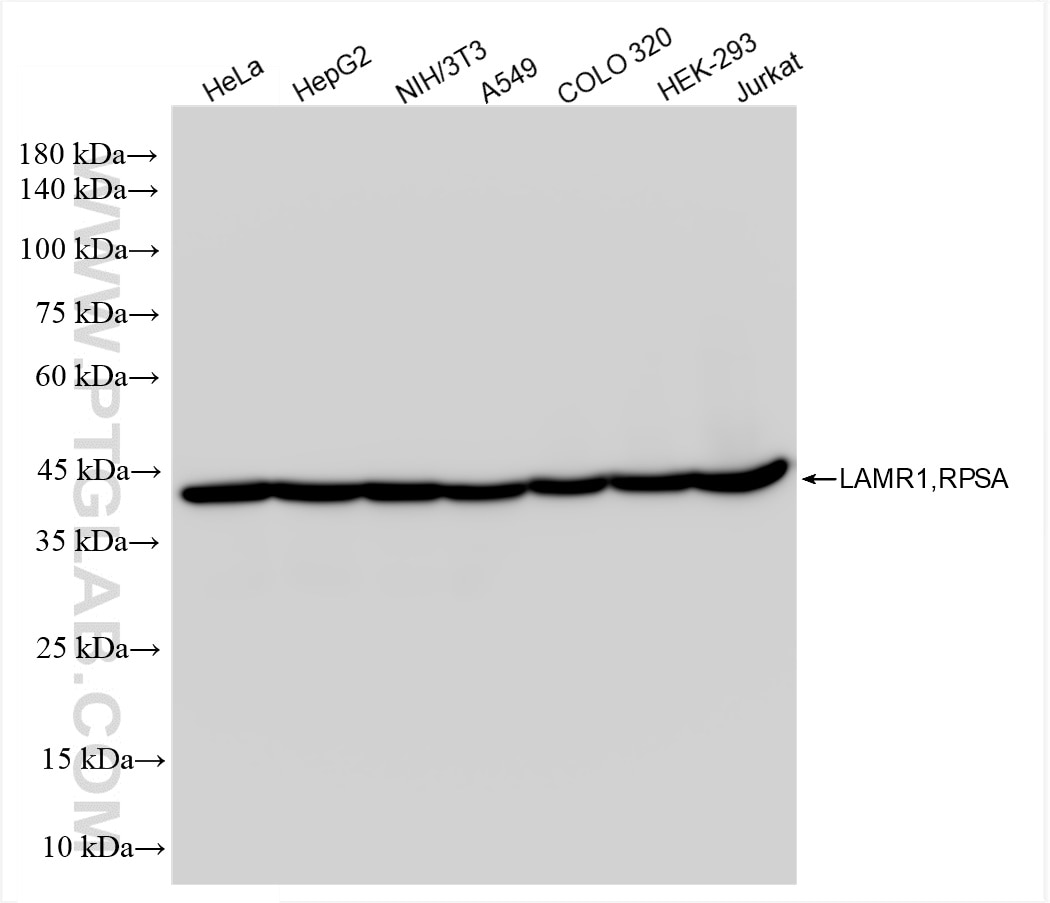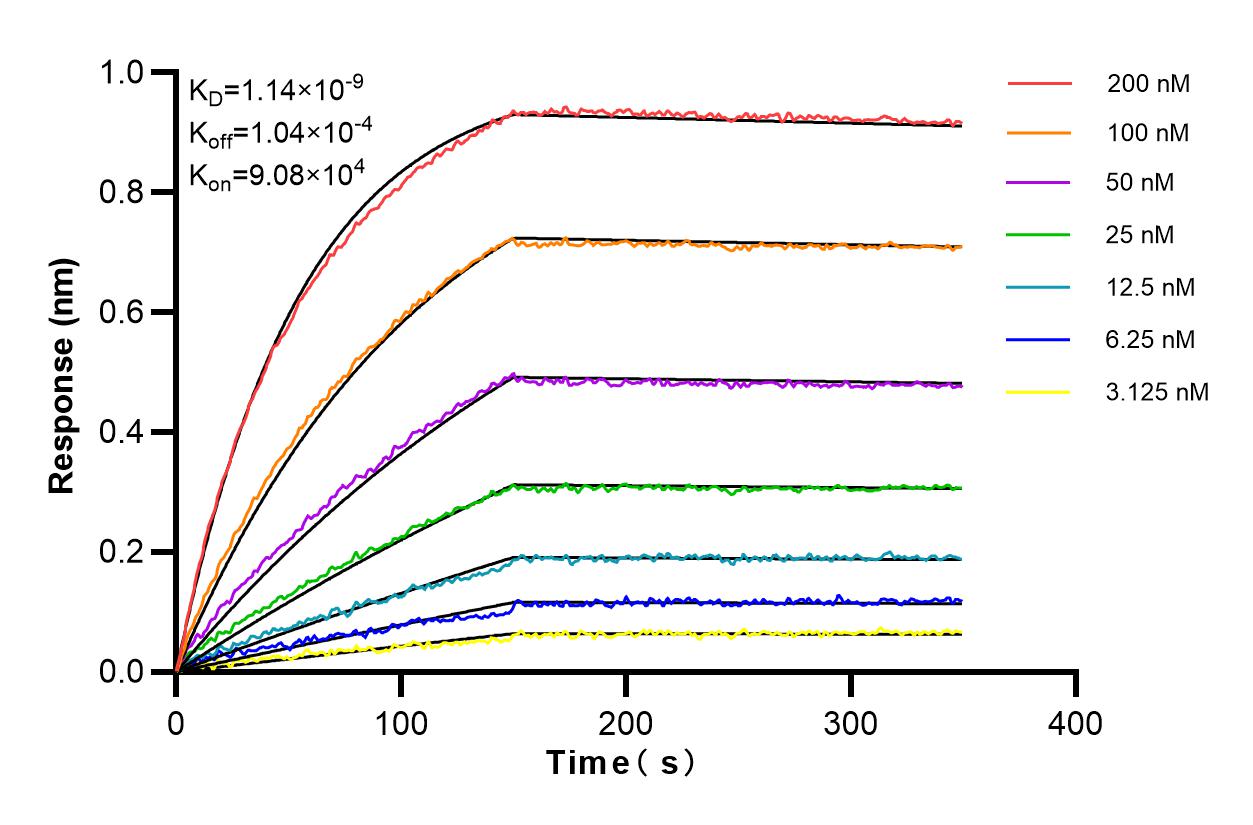Validation Data Gallery
Tested Applications
Recommended dilution
| Application | Dilution |
|---|---|
| It is recommended that this reagent should be titrated in each testing system to obtain optimal results. | |
Product Information
83495-7-PBS targets LAMR1/RPSA in WB, IF/ICC, FC (Intra), ELISA applications and shows reactivity with human, mouse samples.
| Tested Reactivity | human, mouse |
| Host / Isotype | Rabbit / IgG |
| Class | Recombinant |
| Type | Antibody |
| Immunogen | LAMR1/RPSA fusion protein Ag6033 相同性解析による交差性が予測される生物種 |
| Full Name | ribosomal protein SA |
| Calculated molecular weight | 33 kDa |
| Observed molecular weight | 40 kDa |
| GenBank accession number | BC050688 |
| Gene Symbol | RPSA |
| Gene ID (NCBI) | 3921 |
| Conjugate | Unconjugated |
| Form | Liquid |
| Purification Method | Protein A purfication |
| UNIPROT ID | P08865 |
| Storage Buffer | PBS Only |
| Storage Conditions | Store at -80°C. |
Background Information
The ribosomal protein SA (RPSA), previously named 67 kD laminin receptor(67LR), 37 kD laminin receptor precursor (37LRP) and p40 ribosome-associated protein, is a multifunctional protein, that plays a role in a number of pathological processes, such as cancer and prion diseases. It is overexpressed in various cancer cell lines, and the the level of the laminin receptor transcript is higher in colon carcinoma tissue and lung cancer cell line than their normal counterparts. This antibody is a rabbit polyclonal antibody raised against full length RPSA of human origin. This antibody is specific to RPSA (LAMR1).67LR derives from homo- or hetero- dimerization of a 37 kDa cytosolic precursor (37LRP)], most probably by fatty acid acylation. 37LRP is mostly found in the cytosol and nucleus [10] where it is involved in translational processes and maintenance of nuclear structures, respectively. 67LR is localized at the cell surface and it not only serves as a receptor for LM but also acts as a receptor for elastin, carbohydrates and the cellular prion protein.



